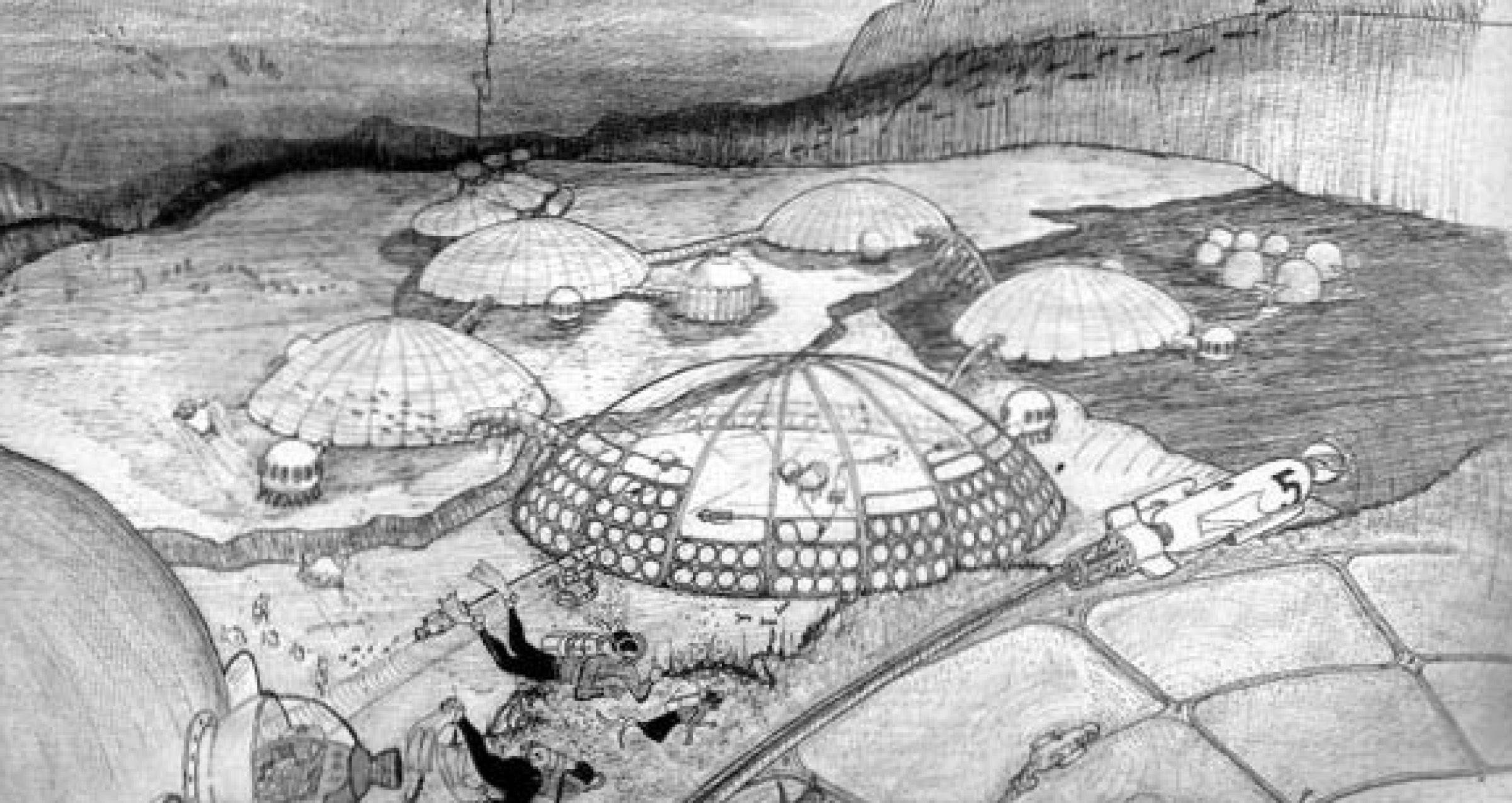Aquatic Environment
The ocean occupies a place in human history as a hostile environment, a bountiful resource, a gateway to lands beyond the horizon, and a metaphor for matter in flux. Of these characteristics, the most architecturally compelling are perhaps the practical aspects of oceanic colonization and the metaphorical fluidity of aquatic environments. Through an exploration of various writings directly or tangentially related to the concept of aquatic environments we find that colonization necessitates adaptation while fluidity enables it. Together these features present a possible architecture which constructs itself to protect us from hostile environments, whether beneath the waves or beyond the stars.
In "The Future of the Future" John McHale situates our relationship with the ocean parallel to our relationship with outer-space claiming it "[a]s man's locally most 'hostile' environ."1 Technologically, both require that we construct protective bubbles in order to survive the hostile environment beyond and which provide similar functions, though their particular constraints are somewhat opposite. In either the vacuum of space or depths of the ocean we must provide contained environment of breathable air at a suitable pressure. In both realms, colonists are far removed from the resources of terrestrial earth and thus must be provided with adequate resources at great difficulty or closed-system technologies and ecologies2 must be invented to allow for a self-sustaining resource recycling loop. This constraint is only somewhat lessened in the aquatic environment by the theoretical ability of colonists to gather resources from the surrounding ocean.
One potential technology which might allow for the harnessing of aquatic resources and speed oceanic colonization is outlined by Wolf Hilbertz in his article "Electrodeposition of Minerals in Sea Water." This technique initially developed for the construction of artificial reefs, which entails the construction and submersion of a metal mesh framework and its subsequent electrification, draws minerals out of suspension, bonding them to the metal which is acting as cathode in the sea water. Subjected to periodic DC voltage, over time the metal framework is built up with layers of accreted minerals, eventually becoming "a strong primary building material."3 Hilbertz, imagining the potential for this simple technology, envisions the 'growth' of structural domes which might either be submerged in the ocean or floated on its surface in an effort to colonize the aquatic environment.4
Along a different technological line of theorizing and with a more metaphorical connection to the aquatic environment, Hilbertz also proposes a fusion of cybernetics and architecture he dubs Cybertecture. Envisioned as an "evolutionary environmental system,"5 the machinery of Cybertecture is composed of three elements: a computer control, mechanisms for the distribution and reclamation of material, and sensing apparatuses to anticipate users' needs. Harnessing machines which could both construct and deconstruct material on a large scale, Cybertecture is able to adjust "the physical environment to immediate, desired or projected needs of the user."6 The metaphorical fluidity of this architecture is paralleled by the vision of William Katavolos in his article "Organics." Though primarily focused on chemistry and structure, the responsive chair described by Katavolos embodies the fluid nature of aquatic environments:
"Now it becomes very possible using blow moulded methods of plastics with a double wall... which would allow the inner shell to flex and to receive the body, a chair which could rise through pressure to receive the sitter, then softly descend for closer contact with the floor, a chair which could easily again bring coolness or heat..."7
Another pathway to this fluidity of form and function is outlined by Gordon Pask. As explained in "A Proposed Evolutionary Model," Pask constructed a computer model which forces automata to evolve based on artificial selection. By creating an environment in which only automata that had collected a baseline quantity of 'food' were allowed to evolve (which entailed the combination of two parent automata's abilities into the next generation)8 Pask was able to develop automata capable of an ever increasing range of actions. Coupled with the potential swarm behavior of slime mold9 and external controls directing construction similar to Hilbertz's Cybertecture, Pask's automata might be developed to construct and disassemble environments fluidly. Such technology could be deployed as a first wave of colonization on the sea floor, building an environment for human colonists to occupy upon completion.
As an instigator for architectural experimentation the aquatic environment embodies an interesting duality. Its hostility necessitates adaptation for survival while its fluidity provides inspiration for that same adaptability. In both ways the aquatic environment will continue to inspire us as we inevitably continue seek new horizons, continuing humanities legacy of exploration and innovation.
1 (McHale, 1967) p78
2 (McHale, 1967) p69
3 (McHale, 1967) p69
4 (Hilbertz, 1979) p110,111
5 (Hilbertz, 1970) p98
6 (Hilbertz, 1970) p99
7 (Katavolos, 1960) p164
8 (Pask, 1961) p239
9 (Pask, 1961) p250

Concept drawings of underwater cybertecture.
(Hillbertz, 1979; p.101)

J. M. W. Turner, Snowstorm-Steamboat off a Harbour's Mouth Making Signals in Shallow Water, and Going by the Lead, 1842.
Citations
Margaret Cohen, "Fluid States" in Cabinet, Issue No.16: The Sea (Winter: 2004/2005), pp.75-82.
Keller Easterling, "The Confetti of Empire," in Cabinet, Issue No.16: The Sea (Winter: 2004/2005).
Wolf Hilbertz, "Electrodeposition of Minerals in Sea Water: Experiments and Applications," IEEE Journal on Oceanic Engineering, Vol. OE-4, No.3 (1979), pp.94-113.
Wolf Hilbertz, "Toward CyberTecture," Progressive Architecture (May 1970), pp.98-103.
McHale, John. "The Future of the Future: Inner Space." Architectural Design 37 (February, 1967), pp. 64-95.
Katavolos, William. "Organics," in Ulrich Conrads (Ed.), Programs and Manifestoes on the 20th Century Architecture (Cambridge, MA: MIT Press, 1970), pp.163-165.
Gordon Pask, "A Proposed Evolutionary Model," H.von Foerster and G.W. Zopf, Jr. (Eds.), Principles of Self Organization: Transactions of the Illinois Symposium, (New York: Harper, 1961), pp: 229-254.